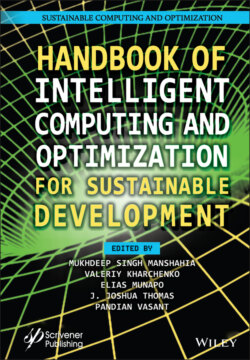Читать книгу Handbook of Intelligent Computing and Optimization for Sustainable Development - Группа авторов - Страница 70
2.7 Conclusion
ОглавлениеIn this chapter, we have discussed the design strategy of artificial molecular machines which can efficiently replace traditional silicon-based computation. Computers and other electronic devices have made human being technologically more efficient than hundred years ago. Likewise, the development of DNA ANN and DNA logic gates are making human technologically capable to build molecular devices which will be more accomplished and more responsible toward the environment in coming era. In DNA computing, the mathematical and logical operations are replaced by the unique DNA chemistry and the Boolean bits are replaced by four nucleotides, i.e., Adenine (A), Guanine (G), Cytosine (C), and Thymine (T). Though the biochemical operations followed in DNA computation are much slower than conventional computing, the parallelism and storage capacity of DNA molecules are exponentially greater.
We are hardly in the first generation of artificial intelligence in the domain of silicon computing. But gradually AI is evolving and scientists are trying to make DNA-based artificial intelligence more applicable in near future, specifically for health protection. DNA computing deals with a large amount of DNA sequences, and thus, the probability of error increases exponentially. In near future, it may be conceivable to design DNA-silicon hybrid architecture or incorporate DNA computing to develop software as it has more adaptability than hardware. DNA computers may successfully replace traditional computing system if automation can be involved in this technology to reduce human or machine interference.
